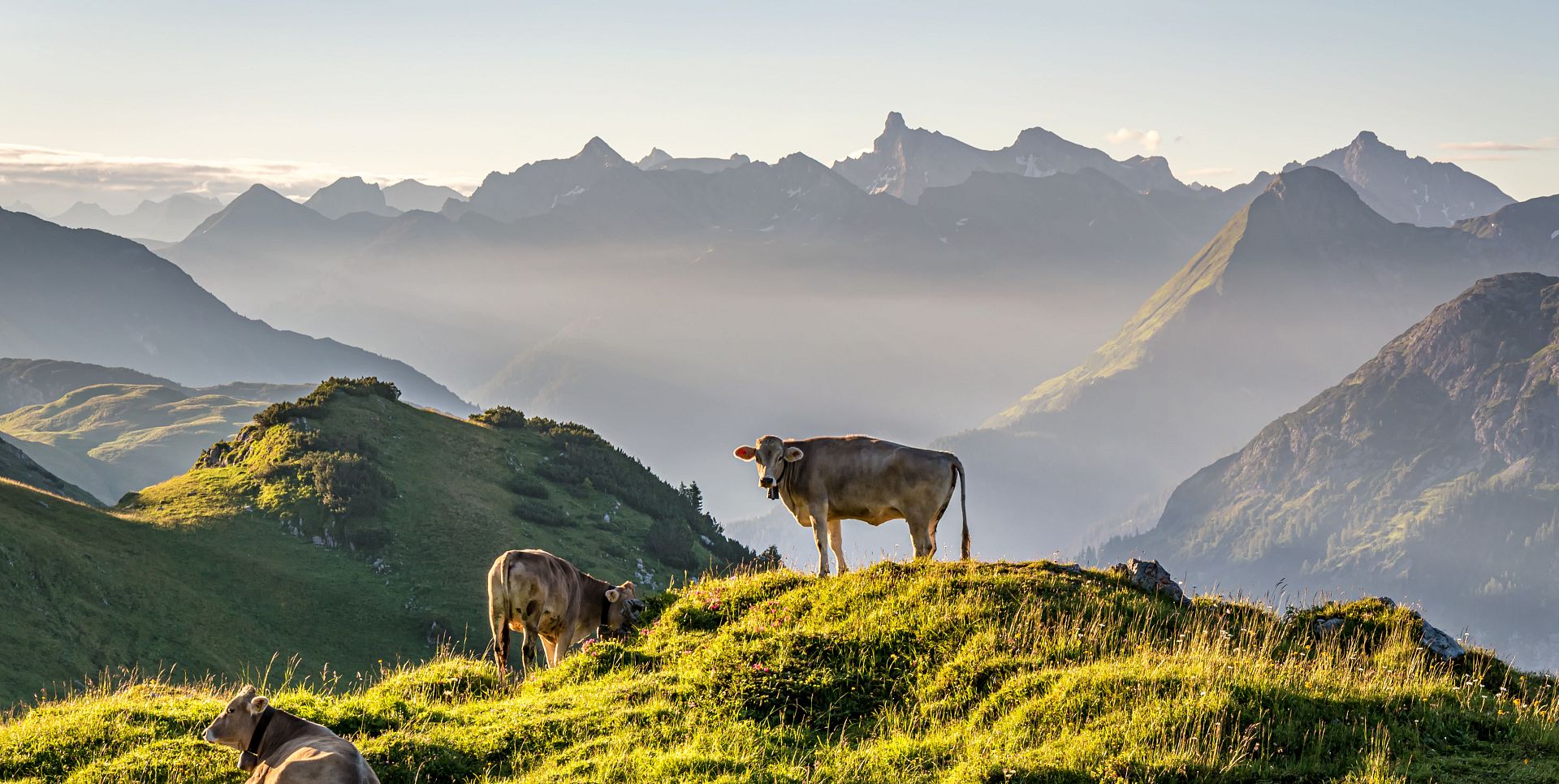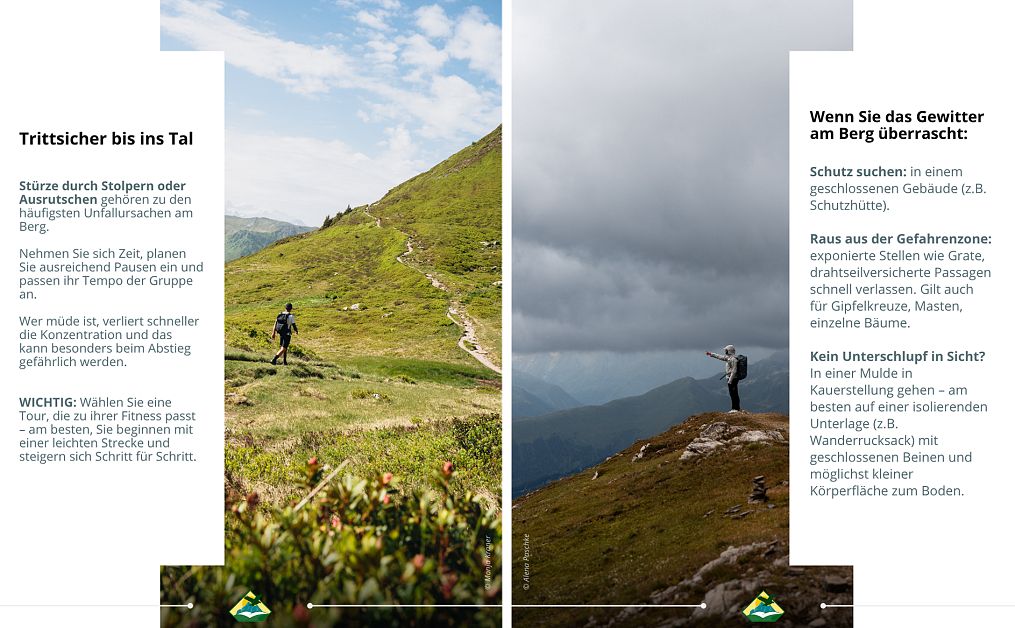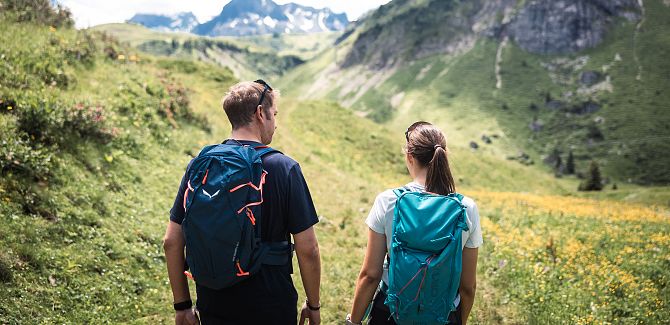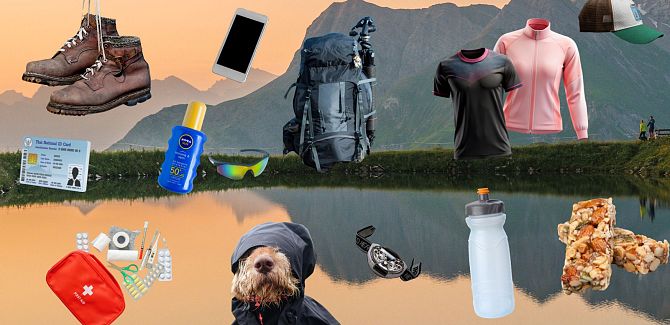
Dos & Don’ts – Proper behavior in the mountains.
Exploring the mountains safely and respectfully.
When hiking in nature, you can experience the beauty of the landscape up close. It’s a pleasure that also comes with responsibility – both for us hikers and for the environment. We have summarized the “Dos & Don’ts in the Mountains” for you, so that you can return home safely:
Stay on marked trails. This way, you won’t get lost and you help protect nature.
Take your trash with you and leave nature as you found it. This includes tissues, fruit scraps, and cigarette butts – everything belongs in the trash!
Don’t forget these must-haves: appropriate footwear, protection against rain, cold, and sun, a first aid kit (European emergency number: 112), a mobile phone, enough food and water (1 to 2 liters), an ID, tissues, cash, a pocket knife, a headlamp, and a map or GPS device.
Cows and other grazing animals need their peace. Keep your distance and do not disturb them. Take special care around herds with young animals. If you are hiking with your dog, avoid contact with grazing and wild animals. In general, dogs must always be kept on a leash!
Drinking and snack breaks are always important, not just on hot days. Bring enough water and food for the entire hike.
Check the weather forecast. In the mountains, weather can change very quickly. Exercise extra caution during thunderstorms. Don’t underestimate the sun either: sunscreen, sunglasses, and a hat are essential on every hike.
Plan your route and know it before you set off. Good preparation is important so you don’t overexert yourself and stay safe in the mountains. Warm-up exercises can help prevent injuries.
Safety comes first – don’t be too proud to turn back. End your hike if you are out of energy or if conditions are poor.
Watch your step. Falls caused by tripping or slipping are among the most common accidents in the mountains. Fatigue affects your concentration and surefootedness; exercise particular caution when descending.

Surefooted all the way to the valley
Falls due to tripping or slipping are among the most common causes of accidents in the mountains.
Take your time, plan enough breaks, and adjust your pace to that of the group.
Those who are tired lose concentration more quickly, which can be especially dangerous during descents.
IMPORTANT: Choose a route that matches your fitness level – ideally, start with an easy trail and gradually increase the difficulty step by step.
If you are caught in a thunderstorm in the mountains:
Seek shelter: Find a closed building (e.g., a mountain hut).
Move out of the danger zone: Quickly leave exposed areas such as ridges or wire-secured passages. This also applies to summit crosses, masts, and isolated trees.
No shelter in sight? Crouch in a hollow – ideally on an insulating surface (e.g., your backpack) with your legs closed and as little body surface touching the ground as possible.
For more mindfulness.
- Join in and help keep our nature clean. Many people are already setting an example by picking up litter left carelessly by others. It’s best to carry a small trash bag in your backpack for this purpose.
- Respect the wildlife protection zones. These are marked on Alpine Club maps, so you can take them into account when planning your route. We all enjoy encounters with marmots, ibex, and other animals, but please keep a safe distance and avoid trying to pet or feed them.
- Leave protected plants where they are. There are many protected plants in the Alps. It is prohibited to pick or dig them up.

DON’TS in the mountains.
Drones have no place in protected areas. They disturb and endanger wildlife. Birds, in particular, may be permanently driven away from their nests.
Hike together whenever possible. It’s safer and twice as enjoyable.
